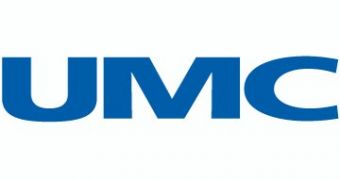UMC announced yesterday having managed to reach a significant milestone with its high-k/metal-gate (HK/MG) technology related to the validation of the process through 45 nanometer SRAM product yield. The company considers this achievement as a first key-step in proving technology performance and process reliability for the HK/MG technology. UMC also revealed that it plans using the technology for its next generation 32/28 nanometer process.
“UMC is making steady progress in bringing our HK/MG process towards 32/28nm pilot production so that our customers can benefit from the performance advantages of this technology,” said Mr. S. C. Chien, vice president of Advanced Technology Development at UMC. He added that “Despite the global economic uncertainties, UMC continues to move full speed ahead with our advanced technology R&D efforts. With our recent achievement of working 28nm SRAM, coupled with this latest HK/MG process material validation, we are well positioned to offer customers a strong technology platform solution when our 32/28nm technology becomes available in 2010”.
UMC was able to manufacture the foundry industry's first 28nm SRAM chips in October this year. The chips are based on the company's low-leakage (LL) process which uses advanced double-patterning immersion lithography and strained silicon technology. Courtesy of UMC's dual approach for its 32/28nm technology, it can address a wide range of market applications.
Conventional silicon gate/silicon-oxy-nitride gate oxide technology is used by the foundry for its LL process, making it ideal for portable applications such as mobile phone ICs. At the same time, the HK/MG stack is mainly targeting speed-intensive products such as graphic, application processor and high-speed communication ICs. In addition, the HK/MG option also allows customizations for 32/28nm low power applications, addressing this way individual requirements as well.

 14 DAY TRIAL //
14 DAY TRIAL //